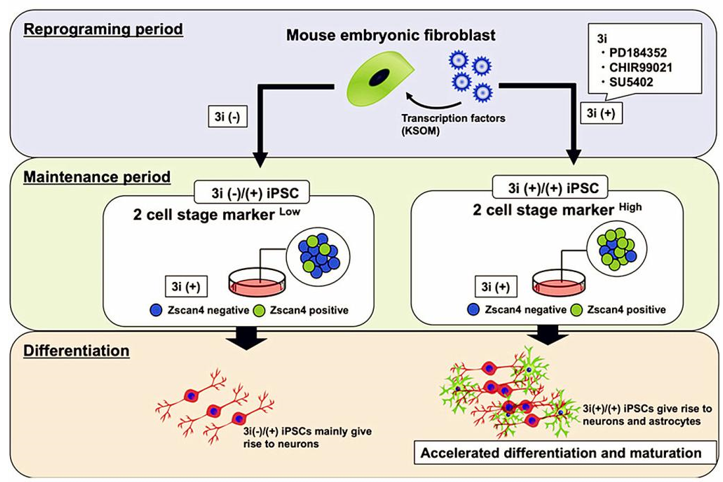Induced pluripotent stem cells (iPSCs) are a group of stem cells that usually derived from various somatic cells, such as fibroblasts. Previous studies have demonstrated that a wide variety of adult cells can be genetically engineered to exhibit stem cell-related properties by introducing key genes of embryonic stem cells (ESCs). For example, several genes, including c-Myc, Oct3/4, Sox2, LIN-28, as well as Klf4, have been broadly used for generating iPSCs. Meanwhile, iPSC technology has rapidly developed and provided a new era in research and therapy.
The iPSC technology has proven its promising role in replacing the ESCs for human disease therapy. These iPSCs can reproduce indefinitely and produce different kinds of cells, such as liver cells and heart cells, in the human body. Moreover, they are a single source of cells that can be used to repair damaged cells or lost cells. As a consequence, iPSC technology can be used in the field of regenerative medicine, human evolution research, and disease modeling. However, the detailed protocols for iPSCs differentiation need to be established and improved before the methods based on iPSC technology applied to clinical trials.
 Fig.1 The overview of iPSC differentiation steps.1
Fig.1 The overview of iPSC differentiation steps.1
Currently, iPSCs models have been applied to many therapeutic areas, like drug discovery, biological pathway research, and the development of stem cell therapy. The protocols for the differentiation of iPSCs are essential for large scale production in the pharmaceutical industry and scientific research institutions. In general, human iPSCs can be differentiated into a number of cell types, such as keratinocytes and mesenchymal stromal cells (MSCs), cardiomyocytes, and neurons. Normally, for the iPSCs differentiation, researchers first induced human IPSCs to mainly adopt the model of the non-neural ectoderm. Afterward, the required cell types will be obtained by using specific media. Then, the expression level of embryoid body markers will be tested to evaluate the differentiation state. Finally, cultures are supplemented with certain factors to enhance the development of organoids in different culture systems.
Recently, many tremendous attempts have been made in the directed differentiation of iPSCs towards keratinocytes in tissue regeneration. Many reports have revealed that iPSC-derived keratinocytes have many advantages over natural keratinocytes: in vivo ready-to-use, highly heterogeneous, and no signs of cellular aging.
Up to now, a series of assays have been developed for the differentiation of iPSCs into MSCs. Basically, the methods for iPSC differentiation toward keratinocytes depends on the ability of long-term cell culture in tissue culture plastic (TCP), the hydrogel, or the 3D culture condition. The culture medium is supplemented with a large number of cytokines or growth factors will be used for inducing the differentiation of iPSCs. Furthermore, the growth state, morphological characteristics, in vitro differentiation, and gene expression levels should be monitored. The data have shown that an iPSC colony can be generally found around 14-24 days after differentiation stimulation. Besides, iPSC-derived MSCs can be identified on 36-48 days of iPSC differentiation.
Reference
For Research Use Only. Not For Clinical Use.